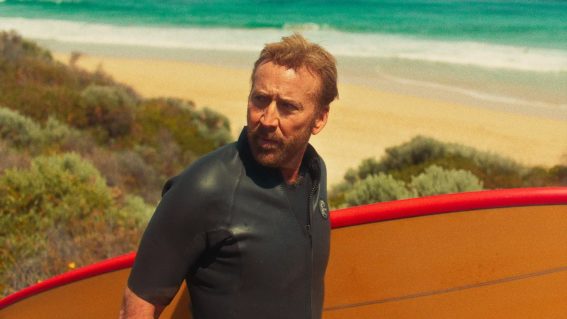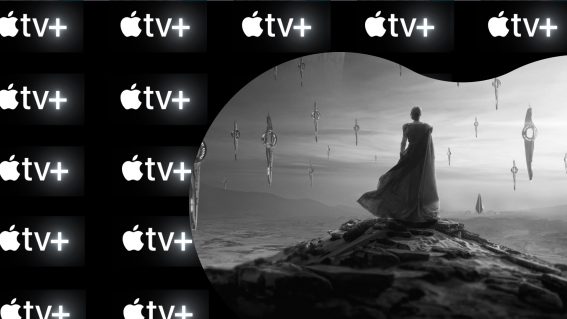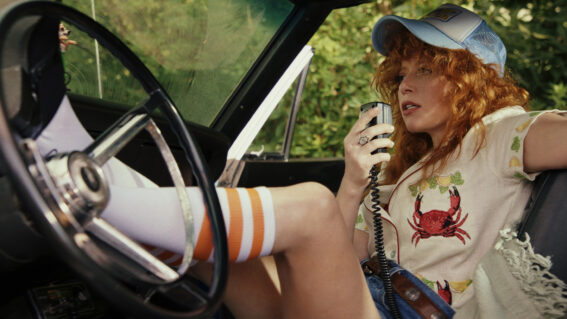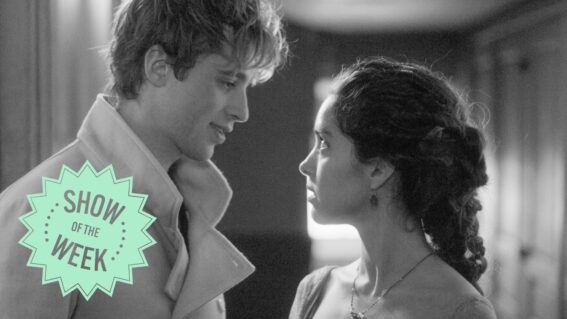Shelf Life #12
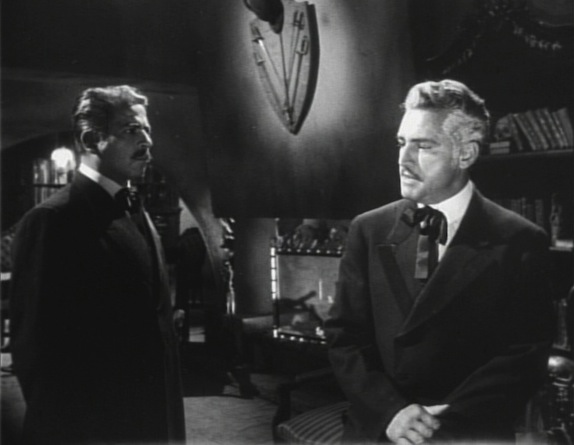
Just in time for you to plan your Halloween viewing, Aaron Yap has dusted off a few seldom-seen horror titles in the latest edition of his Shelf Life blog. Will you be able to track all of these down? Maybe not – but there’s no harm in trying! They’ll sure beat a Saw marathon if that was your original plan…
DELIRIUM: PHOTOS OF GIOIA

If ever you need evidence that a filmmaker possessing a legendary family name doesn’t automatically guarantee the inheritance of the same creative genes, look no further than Lamberto Bava. The gulf in skill and aesthetic between Lamberto and his revered pops Mario is painfully clear in Delirium: Photo of Gioia (1987), a late-period giallo where Bava Jr. cribs his father’s signature colored gel lighting and none of his cinematic finesse. To be clear, I’ve enjoyed some of Lamberto’s work- huge fan of Blastfighter here- but don’t walk into Delirium expecting anything other than a delightfully trashy and absurd time.
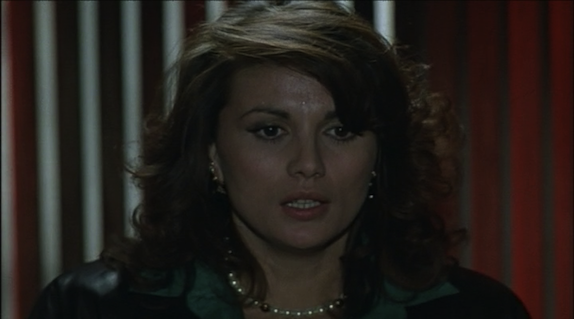
Serena Grandi, whose voluptuous assets made her something of a popular fixture in Italo softcore and horror flicks in the ‘80s, stars as Gloria, the editor of a porn mag called Pussycat whose models are getting bumped off by a madman who appears to have a thing for her. We get plenty of suspects to choose from: could it be her photographer brother Tony (Vanni Corbellini)? Or gay stylist Roberto (David Brandon)? Perhaps it’s her pervy, wheelchair-bound neighbour Mark (Karl Zinny), who likes to peep at her through his telescope and call in with elegant rhetoric like “You’re a sex goddess who makes my throbbing member explode with desire”.
Hardcore horror fans who revel in the genre’s stylized sadism might balk at Delirium’s relatively tame violence, but the set-pieces, including the first murder where the killer imagines the victim with a giant eyeball for a head, and the following death-by-bees sequence, are hilariously daft and memorably bizarre. Best enjoyed by giallo completists, who will be unable to resist the film’s kitschy ‘80s music video visuals, goofy English dubbing, guitar-shredding hard-rock cues and sleazy attention to Grandi’s 38Ds.
THE STRANGENESS
Prospective Make My Horror Movie-makers looking for inspiration should take a few notes from The Strangeness, a technically primitive but oddly appealing little monster movie slapped together on paltry pocket change by a group of film school students in 1979.
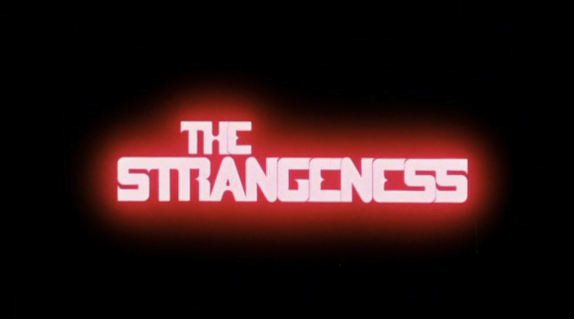
The plot is fairly straightforward, following a ragtag team of expeditioners into a goldmine that’s been shut down after its previous explorers mysteriously disappeared. There’s the caving expert and his sidekick, the grizzled, inexplicably British guide, the blabbermouth researching writer and his photographer girlfriend, the glum geologist and the stern businessman who’s in charge of the operation. The guide, Morgan, warns them that the mine is on sacred American Indian land, and the natives used to make up ghost stories to scare the white people away. But the truth is there’s a slime-drooling, vagina-head creature with slithery tentacles residing in those caves, ready to devour any human that tries to cross its path.
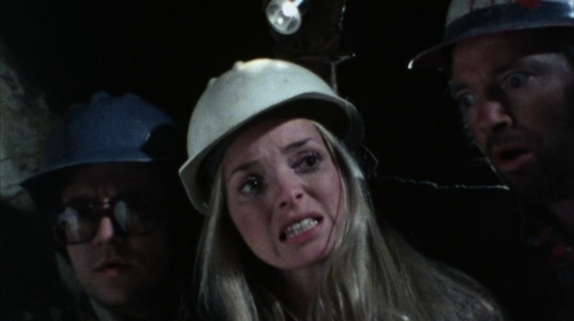
Reviews tend to slam this film for being a total bore; I can definitely see how the uneventful, talky first half could lose viewers, especially considering how the characters are a rather annoying bunch to spend time with, and that the monster’s initial appearance is limited to one or two brief shots of its tentacles. Okay, it’s no The Descent, but there’s something to be said for the film’s home-grown, rough-hewn charm, from the amateurish acting by the cast of nobodies to its glaringly cheap interior sets, which were constructed from paper mache and tin foil (something you probably wouldn’t get away with shooting on HD digital, but looks very forgiving on 16mm). The stop motion-animated creature itself — one of the weirder-looking monsters out there — is something Ray Harryhausen would be proud of, while the chilly Carpenter-esque synth score help enhance the claustrophobic, cavernous setting.
THE BLACK PIT OF DR. M
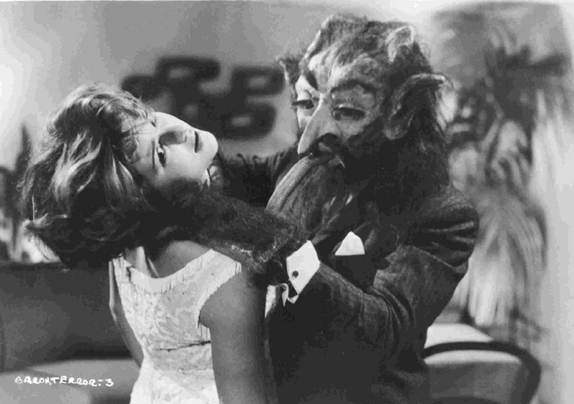
Back in the early 2000s, a short-lived, curiously dodgy company called Beverly Wilshire Filmworks released a number of vintage Mexican horror flicks on DVD. Titles like The Brainiac, Curse of the Crying Woman and Doctor of Doom, all which were originally brought to the States and dubbed into English by a guy named K. Gordon Murray in the ‘60s. The DVDs (if you can even call them that) had shitty transfers and even shittier cover art, but they were dirt cheap and I couldn’t help myself and picked up a few. Thankfully, the films were fantastic pulpy fun, and it’s easy to why anyone who caught them when they initially aired on late night TV would remember them with fondness.
Fast forward to 2006, another company, CasaNegra, began issuing some of the same films on DVD, but actually did the hard yards and went through the process of completely remastering them from vault elements. In addition, the DVDs were presented in their original language with optional English subtitles and came with informative special features. These lovingly packaged editions revealed the films to be more than cheesy B-horror entertainment — they were works of considerable artistry and imagination that could rival any of the monster classics Universal put out in the ‘30s. Unfortunately CasaNegra has long since folded, but I did snag their releases of The Brainiac (a favourite) and The Black Pit of Dr. M before that happened.

I would maintain that Chano Urueta’s The Brainiac is the best gateway into Mexican horror, just ‘cos it’s so wonderfully batty, but Fernando Méndez’s The Black Pit of Dr. M (1959) is easily just as solid a film to start with. Méndez had already established himself to a top-drawer genre director with El Vampiro a few years earlier, and this gloomy 1959 supernatural shocker simply reinforces the fact.
Fascinated with the afterlife, Dr. Masali (Rafael Bertrand) reaches out to his recently departed colleague Jacinto Aldama (Antonio Raxel) via seance to see how he can experience it without actually dying. Aldama’s spirit materialises and informs him that in a few months, on November 15, at exactly 9pm, he will know the answer. This creepy prophecy is soon set into motion with a series of puzzling incidents, starting with Aldama’s daughter Patricia (Mapita Cortés) entering the picture, and continuing with a subplot where a mad gypsy inmate goes on the run after disfiguring an orderly’s face with acid.
The Black Pit of Dr. M is a Grand Guignol class act, pure and simple. With a hurtling pace that rarely lets up, the film practically explodes with gothic flourishes: Victor Herrara’s visually arresting black-and-white cinematography fills the backdrops with deep, ominous shadows that threaten to consume the characters at every turn, the images of screaming mental patients, coupled with a brassy, booming orchestral score, keep us rattled, and there’s a fog-and-wind machine working overtime to sustain the spooky, dread-soaked atmosphere. The “black pit” of the title is conspicuously missing — a metaphor for Masali’s death-consumed soul/mind, perhaps? — but it’ll be the last thing on your mind once you’ve been gripped by this gloriously morbid madhouse of a movie.

